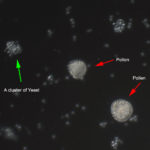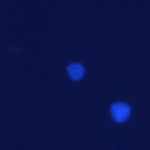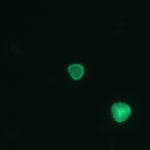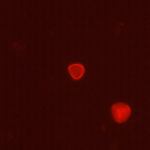Pollen is a common environmental contaminant, especially in Spring and Summer. When looking at a field sample there is a high likelihood that you will find pollen. This page will help you identify it.
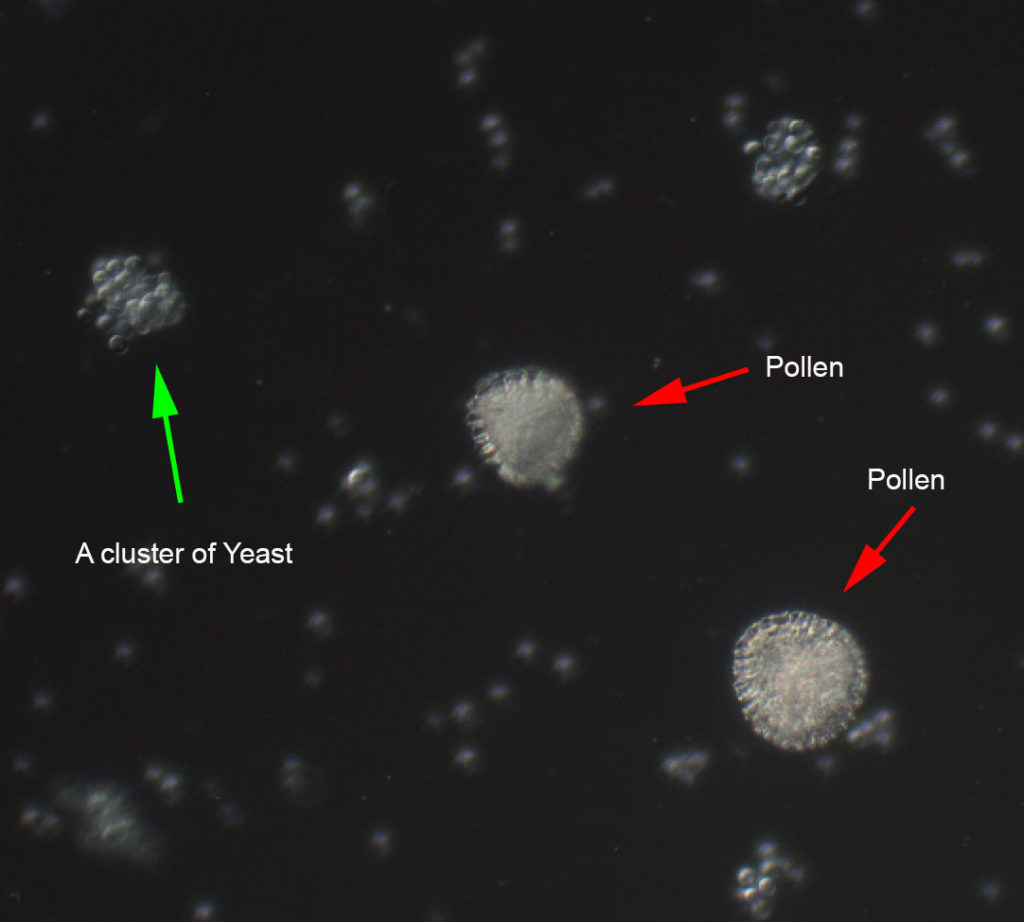
Pollen is a relatively large (around 50µm) roundish object. It always consists of 2-3 cells (that can be identified using our DNA probes DAPI, SYTO, PI). More importantly, pollen is coated with a substance (sporopollenin) that is highly autofluorescent. Furthermore, the outer pollen wall (Exine) almost always has some sort of patterned ornamentation. This can look like a net-like pattern, or it can have “spikes” coming out all over the surface.
This reticulated (net-like) patterning is seen only in Pollen. No other cell type that may be found in a field sample shows this.
So, when you are trying to identify whether you have pollen in your sample look for:
- Autofluorescence in all channels
- Reticulated or ornamented outer coating.
- Large size (ca 50µm)
- A shape that is round, oval, or triangular.
